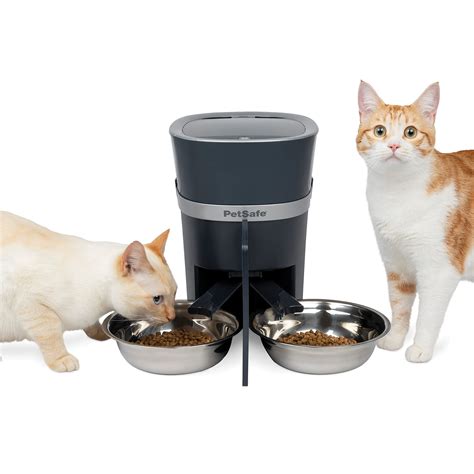Introduction
Pet parenting has evolved significantly in recent years, with the advent of smart technology revolutionizing the way we care for our furry companions. Smart feeding devices offer a plethora of benefits, from automated meal scheduling to health and wellness monitoring. This article delves into the advantages and challenges of smart feeding, comparing it to traditional feeding methods and highlighting the transformative impact it is having on pet parenting.

The Benefits of Smart Feeding
-
Automated Meal Scheduling: Smart feeders allow you to set specific feeding times and portions, ensuring your pet receives the right amount of food at the right time, even when you’re away.
-
Remote Feeding: With a smartphone app, you can remotely monitor and feed your pet, providing peace of mind when you’re out of town or working late.
-
Personalized Feeding: Smart feeders can store multiple food profiles, enabling you to customize meal plans tailored to each pet’s age, breed, and health needs.
-
Health Tracking: Some smart feeders track your pet’s eating habits, alerting you to any changes that may indicate health issues.
-
Reduced Food Waste: Smart feeders dispense precise portions, eliminating overfeeding and reducing food waste.
Smart Feeding VS Traditional Methods
| Feature | Smart Feeding | Traditional Feeding |
|---|---|---|
| Automated Scheduling | Yes | No |
| Remote Feeding | Yes | No |
| Personalized Feeding | Yes | Limited |
| Health Tracking | Some models | No |
| Food Waste Reduction | Yes | Often |
Common Mistakes to Avoid
-
Over-Reliance on Technology: Smart feeding devices are not a replacement for human interaction. Regular playtime and attention are still essential for your pet’s well-being.
-
Ignoring Health Signals: While smart feeders can track eating habits, they cannot diagnose health issues. If you notice any changes in your pet’s appetite or behavior, consult a veterinarian promptly.
-
Inconsistent Feeding: Avoid changing your pet’s food and feeding schedule too frequently. Consistency is crucial for their digestive health.
-
Lack of Backups: Ensure you have a backup plan in case of power outages or device malfunctions. Consider manual feeding options or a second smart feeder.
-
Ignoring Pet Preferences: Pay attention to your pet’s eating habits and adjust the feeding schedule and portions accordingly.
How to Transition to Smart Feeding
-
Start Gradually: Introduce the smart feeder slowly, allowing your pet to adjust to the new routine.
-
Monitor Your Pet: Observe your pet’s eating habits closely after transitioning to smart feeding.
-
Adjust as Needed: Fine-tune the feeding schedule and portions based on your pet’s individual needs.
-
Provide Plenty of Water: Ensure your pet has constant access to fresh water, regardless of when they eat.
-
Seek Professional Advice: If you have any concerns about smart feeding or your pet’s health, consult a veterinarian.
Expand Market Insights
According to the American Pet Products Association, pet owners in the US spent over $31 billion on pet food and treats in 2021. As pet parenting continues to evolve, smart feeding devices are expected to capture a significant market share, driven by the growing demand for convenience, health monitoring, and personalized care. Industry analysts predict that the global smart pet feeding market will reach $2 billion by 2025, with a compound annual growth rate (CAGR) of 15%.
Conclusion
Smart feeding is revolutionizing pet parenting, offering a myriad of benefits over traditional feeding methods. From automated meal scheduling to health tracking, these devices empower us to provide our furry companions with optimal nutrition and care. By embracing smart feeding and avoiding common mistakes, pet parents can enhance their bond with their pets while ensuring their health and well-being for years to come.
Effective Strategies for Pet Parents
-
Research: Explore different smart feeding devices and their features to find the best fit for your pet’s needs.
-
Consider Your Pet’s Health: Seek veterinary guidance to determine if smart feeding is suitable for your pet’s specific health conditions.
-
Monitor Your Pet’s Behavior: Pay attention to your pet’s eating habits and adjust the feeding schedule as needed.
-
Provide Enrichment Activities: Smart feeding should not replace human interaction. Engage your pet in regular playtime, grooming, and training sessions.
-
Stay Informed: Keep up with the latest advancements in pet care technology to optimize your pet’s well-being.





















